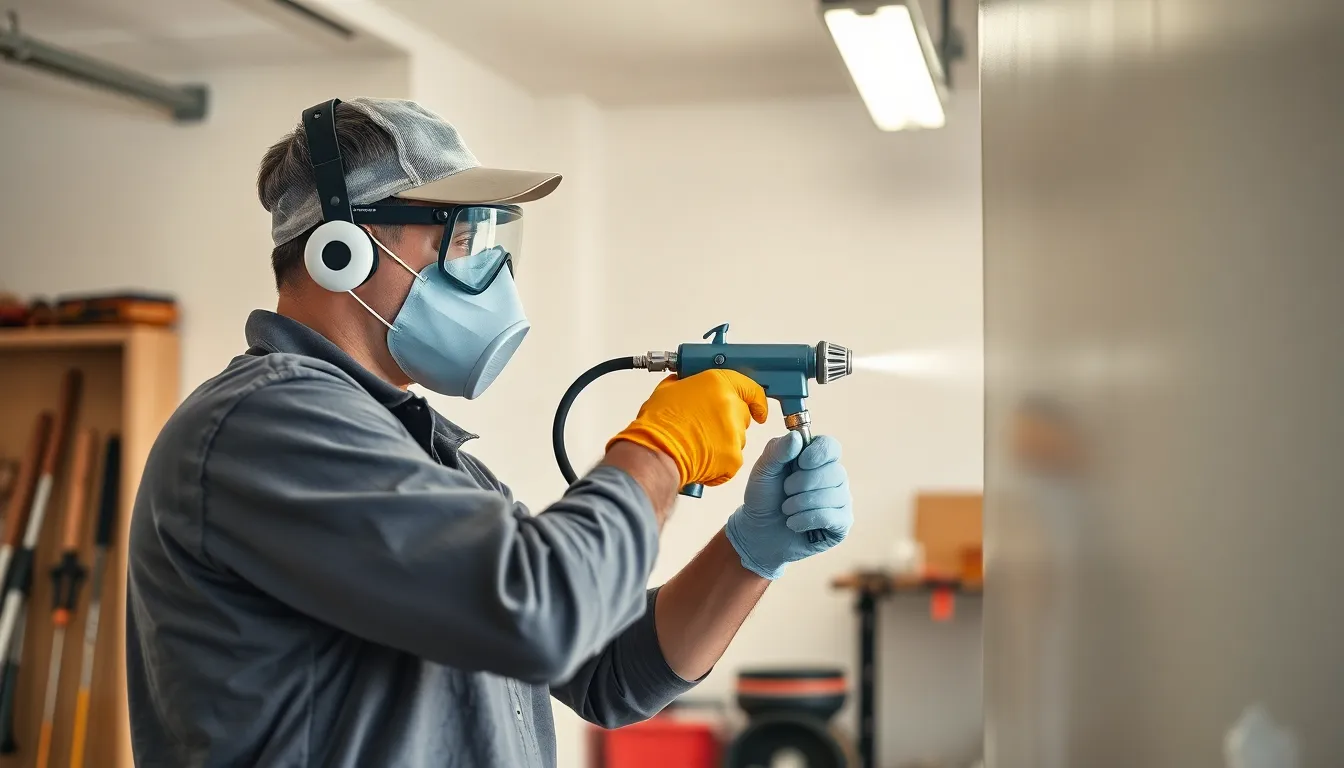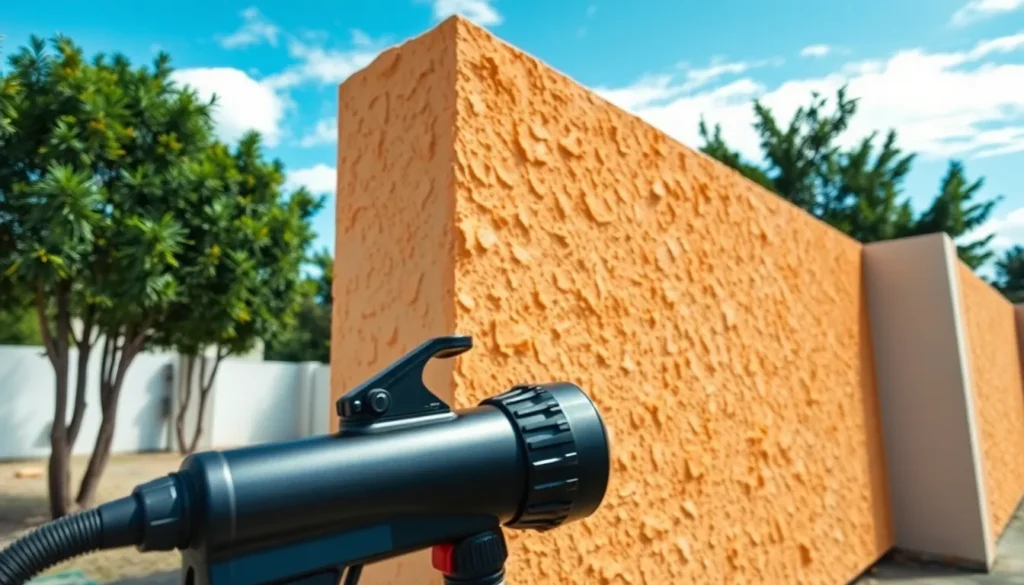When it comes to achieving a flawless paint finish, orange peel can be a frustrating setback. This common issue, characterized by a bumpy texture resembling the skin of an orange, can occur in both automotive and interior painting. Understanding the causes behind this defect is crucial for any DIY enthusiast or professional painter looking to elevate their work.
Several factors contribute to the development of orange peel, including improper application techniques, environmental conditions, and the type of paint used. By identifying these elements, painters can take proactive steps to ensure a smooth and even finish. Delving into the causes of orange peel not only helps in troubleshooting but also enhances overall painting skills.
Table of Contents
ToggleUnderstanding Orange Peel in Paint
Orange peel in paint occurs due to various factors during application. Identifying these causes helps achieve a smooth finish.
- Application Technique
Improper technique leads to uneven coats. Spraying too far from the surface results in insufficient paint, causing an uneven texture. Inconsistency in speed and angle while spraying also contributes to the problem.
- Environmental Conditions
High temperatures or humidity influences the drying process. When paint dries too quickly, it traps air, creating a bumpy texture. Conversely, low temperatures can prevent proper adhesion, leading to similar issues.
- Type of Paint
Some paint formulations are more prone to orange peel. Heavy-bodied or thick paints often create a textured surface when applied. Choosing the appropriate paint for the desired finish can mitigate this risk.
- Equipment Quality
Spray equipment plays a critical role in achieving a smooth finish. Low-quality sprayers may produce uneven atomization, leading to texture issues. Using well-maintained, high-quality sprayers ensures better paint application.
- Surface Preparation
Insufficient surface preparation impacts paint adhesion. Dust, grease, or old paint layers can cause issues. Ensuring surfaces are clean and primed enhances adhesion and reduces orange peel occurrences.
Understanding these factors aids in preventing orange peel, enabling painters to refine their techniques and improve their end results.
Common Causes of Orange Peel

Several factors contribute to the occurrence of orange peel in paint finishes. Understanding these causes aids in preventing this defect and achieving a smoother application.
Improper Application Techniques
Improper application techniques play a significant role in the development of orange peel. Maintaining the wrong distance from the surface during spraying can lead to uneven coatings, causing a bumpy texture. Inconsistent speed and angle of the spray can also create an inadequate finish. Applying too thick a coat can trap air, exacerbating the issue. Ensuring a steady hand and even movement helps minimize the risk of orange peel.
Environmental Factors
Environmental factors significantly influence paint application and finish quality. High temperatures and humidity can cause paint to dry too quickly, trapping air and forming a textured surface. Conversely, low temperatures can hinder proper adhesion, leading to poor coverage. Furthermore, painting in windy conditions may result in dust and debris settling on wet paint, contributing to an uneven texture. Painters must consider these environmental impacts to achieve optimal results.
Types of Paint and Their Influence
Different types of paint significantly influence the occurrence of orange peel. Understanding these distinctions is essential for achieving a smooth finish.
Spray Paint vs. Brush Paint
Spray paint and brush paint differ notably in application techniques. Spray paint often leads to finer finishes due to its atomized particles, but improper technique may cause orange peel. Keeping the right distance and speed while spraying prevents uneven coverage. Brush paint, while offering more control, can lead to texture issues if applied too thickly or without proper technique. Both methods require careful application to minimize defects, aligning with environmental conditions and paint formulations.
Water-Based vs. Solvent-Based Paints
Water-based paints generally dry faster than solvent-based paints. Quick drying can trap air and contribute to orange peel. Solvent-based paints provide a longer open time, allowing for smoother application. However, they can also develop texture if not applied correctly. Selecting the appropriate type of paint based on project needs and environmental factors helps reduce the likelihood of orange peel. Understanding these differences equips painters with the knowledge necessary for a flawless finish.
Solutions to Prevent Orange Peel
Preventing orange peel in paint finishes requires attention to preparation, priming, and application techniques. Implementing effective strategies significantly enhances the overall quality of the paint job.
Preparation and Priming
Preparation is crucial for optimal paint adhesion and finish.
- Surface Cleaning: Clean surfaces thoroughly to eliminate dust, grease, and contaminants. Use a suitable solvent for specific surface materials.
- Sanding: Sand the surface to create a smooth texture. A finer grit sandpaper promotes better adhesion and reduces the risk of texture flaws.
- Priming: Apply a quality primer to ensure even paint distribution. Select primers that are compatible with the paint type, as this impacts adhesion and finish smoothness.
Application Tips for a Smooth Finish
Application techniques directly affect the final appearance of the paint.
- Correct Distance: Maintain a consistent spraying distance of 6 to 12 inches from the surface. This distance aids in achieving even coverage.
- Steady Motion: Keep a steady speed and angle while spraying. Unsteady movements can lead to thick patches and uneven coating.
- Multiple Thin Coats: Apply several thin coats instead of one thick coat. This method promotes better leveling and reduces the likelihood of orange peel.
- Optimal Weather Conditions: Paint in optimal temperature and humidity levels. Conditions between 60°F to 75°F with humidity levels below 50% are ideal for application.
- Use Quality Equipment: Employ high-quality sprayers designed for the specific paint type. Good equipment ensures even atomization and prevents texture issues.
Implementing these strategies minimizes the risk of orange peel and enhances final paint results.
Understanding the causes of orange peel in paint is essential for achieving a flawless finish. By recognizing factors like application techniques environmental conditions and paint types one can significantly reduce the likelihood of this defect. Proper preparation and the use of high-quality equipment play a crucial role in ensuring a smooth application. With attention to detail and adherence to best practices DIY enthusiasts and professional painters alike can enhance their skills and achieve the desired results. Ultimately a little knowledge and care can go a long way in preventing orange peel and elevating the quality of any painting project.





